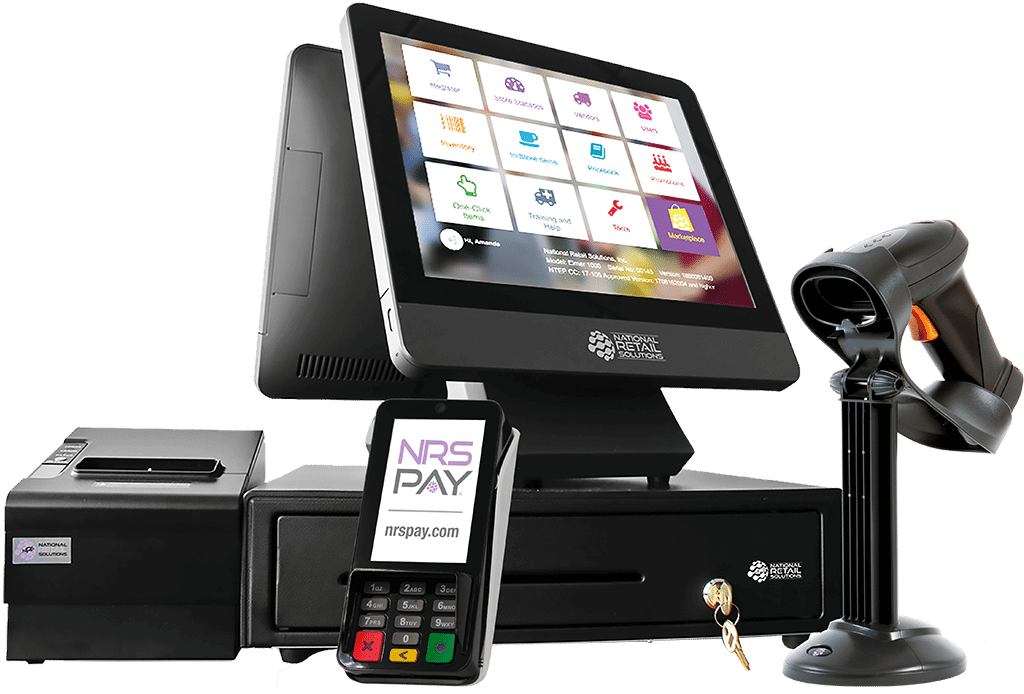Omnichannel retail has become a crucial strategy for meeting modern consumer expectations, blending physical and digital shopping experiences to create a seamless customer journey. This guide explores the concept of omnichannel retail, outlining its definition, benefits, key components, strategies, and challenges. We will take a comprehensive dive into how omnichannel retail transforms customer interactions, merging various channels to enhance shopping experiences. Thereafter, the guide will cover essential elements for successful implementation, such as technological infrastructure and customer-centric strategies. And finally, we will propose solutions to common challenges. Whether you are an experienced retail professional or a newcomer, this article offers valuable insights and practical tips for mastering omnichannel retail.
What is Omnichannel retail?
Omnichannel retail represents the pinnacle of retail innovation, seamlessly integrating all shopping channels to provide a unified customer experience. It evolved from earlier single-channel models, which limited customer interactions to one medium, and multi-channel approaches, where various channels operated independently. Unlike these models, omnichannel retail connects multiple platforms, allowing customers to transition smoothly between them. For example, a customer might engage with a product on social media, research it online, check its availability in-store, and choose to pick it up or purchase it online. This approach ensures a consistent experience across all touchpoints, emphasising a customer-centric strategy that adapts to the modern consumer’s preference for convenience, efficiency, and personalisation.
The Importance of Omnichannel Retail
The significance of omnichannel retail in today’s competitive marketplace is immense. As consumer expectations evolve due to technological advancements and changing lifestyles, retailers must adapt to stay relevant. Omnichannel strategies not only meet these shifting consumer demands but also enhance business operations, offering numerous benefits that help retailers remain successful.
Enhanced Customer Satisfaction
Omnichannel retail greatly enhances customer satisfaction by providing a seamless shopping experience across multiple channels. This strategy caters to modern consumers’ preferences, allowing them to start and finish their shopping journey on different platforms while maintaining consistency. For example, customers can browse and add items to their cart on a mobile app and complete their purchase on a desktop without losing their cart contents or personalised recommendations. This integration reduces friction and abandonment rates. Moreover, omnichannel retail leverages data from various touchpoints to personalise interactions, tailor recommendations, and customise marketing, improving the overall shopping experience.
Increased Sales and Revenue
An effective omnichannel strategy can significantly boost sales and revenue for retailers by leveraging several key advantages. Providing multiple touchpoints and a consistent experience across channels equips retailers to capture sales that might be lost in a single-channel model, such as by enabling customers to check product availability online if it’s unavailable in-store. This particular strategy within retail enhances cross-selling and upselling through unified customer data, allowing for more relevant product recommendations. The convenience and consistency offered by omnichannel approaches also foster increased customer loyalty and repeat purchases, contributing to long-term revenue growth.
Better Inventory Management
Omnichannel retail strategies significantly improve inventory management by integrating data across all channels and locations, providing real-time visibility into stock levels. This integration enables accurate forecasting and resource allocation, supports flexible fulfilment options like ship-from-store or in-store pickup, and reduces lost sales by utilising available inventory across locations. Additionally, data from omnichannel operations helps refine inventory forecasting, reducing stockouts and overstock situations, thus minimising carrying costs and markdowns while ensuring product availability to meet customer demand.
Inventory Management is a pivotal component to business growth and success. Discover why Intuendi is your best choice for Inventory Management.
Improved Marketing Effectiveness
Integrated retail strategies enhance marketing effectiveness by providing a unified view of customer interactions across all touchpoints, enabling more targeted and personalised campaigns. With behaviour analysis occurring across multiple touchpoints, retailers can tailor marketing efforts to different customer segments and create channel-specific campaigns. Omnichannel data supports sophisticated retargeting strategies and accurate attribution of marketing efforts, allowing retailers to better understand which channels drive conversions, optimise budgets, and refine marketing strategies.
Differences between Omnichannel and Multichannel Retail
Omnichannel and multichannel retailing represent different strategies for customer engagement. Multichannel retailing involves selling through various independent channels like physical stores and e-commerce sites, each with separate stock and marketing strategies, potentially leading to a fragmented customer experience. Omnichannel retailing integrates these channels to provide a seamless, cohesive experience where customers can transition smoothly between touchpoints, such as starting a purchase on a mobile app and completing it in-store. Choosing between enhancing a multichannel approach or transitioning to omnichannel depends on business goals, customer expectations, and resources. Both approaches aim to improve customer experience, with omnichannel offering a more integrated solution for meeting evolving demands.
Key Components of Omnichannel Retail
Effective strategies for a unified channel approach rely on several key components that collaborate to deliver a seamless, integrated shopping experience. Grasping these elements is vital for businesses aiming to implement or enhance their omnichannel approach.
Integrated Customer Experience
Central to the merged channel retail system is the integrated customer experience, which aims to provide a consistent and seamless journey across all touchpoints, whether in-store, online, via a mobile app, or on social media. This means recognising and utilising a customer’s interactions, preferences, and purchase history across all channels. For instance, if a customer has bought something in a physical store, this information should be accessible online, enabling personalised recommendations and promotions. Integration covers the entire customer journey, from product discovery to post-purchase support, ensuring consistency in branding, messaging, and service quality across all channels. Customers should perceive a unified brand experience, regardless of the channel they use.
Unified Commerce Platform
A unified commerce platform is the technological foundation of omnichannel retail, integrating all retail operations such as inventory management, order processing, CRM, and POS systems. This centralised system ensures seamless data flow between channels and departments, providing a single source of truth for all customer interactions and transactions. This integration is essential for maintaining consistency across channels and enabling features like real-time inventory updates and cross-channel order fulfilment. For instance, when a customer makes an online purchase, the platform should immediately update inventory levels across all channels, adjust the customer’s purchase history in the CRM, and trigger personalised follow-up communications.
Integrate, don’t hesitate! Join businesses on the journey of sustainability and profitability with Intuendi.
Data Integration and Analytics
In omnichannel retail, data is a vital asset. Data integration involves gathering, consolidating, and analysing information from all customer touchpoints to gain a comprehensive view of customer behaviour and preferences. Advanced analytics tools are used to derive actionable insights from this integrated data, informing personalised marketing campaigns, inventory forecasting, and product development. This information can then be used to adjust product offerings, optimise pricing strategies, or create targeted marketing campaigns.
Consistent Brand Presence
In this particular retail framework, maintaining a consistent brand presence across all channels is essential. This consistency involves not only visual elements like logos and colour schemes but also the overall brand voice, messaging, and values. A coherent brand presence ensures customers have a unified experience regardless of how they interact with the brand, building trust and reinforcing brand recognition. This is especially important as customers often engage with the brand through multiple touchpoints during a single purchase journey. Similarly, promotional offers and pricing should be uniform across channels to avoid confusion and maintain customer trust.
Strategies for Successful Omnichannel Retail
Implementing a successful integrated-channel retail strategy demands meticulous planning and execution. Here are several key approaches businesses can use to establish an effective harmonious presence:
Building a Unified Commerce Infrastructure
A robust, unified commerce infrastructure is essential for any successful omnichannel strategy. This involves creating a centralised system that manages all aspects of retail operations, including inventory, order management, customer data, and analytics. Businesses should prioritise scalability and flexibility when developing this infrastructure, ensuring the system can accommodate future growth and adapt to new technologies and channels. Cloud-based solutions often offer the necessary flexibility and cost-effectiveness compared to traditional on-premise systems. Integration is crucial; all existing systems, such as point-of-sale, e-commerce platforms, CRM, and inventory management, should be connected to the unified platform. This integration ensures data consistency and enables real-time updates across all channels.
Leveraging Data and Analytics
Data is the lifeblood of the aforementioned retail structure, making robust data collection and analytics capabilities essential for understanding customer behaviour, preferences, and trends across all channels. Advanced analytics tools, including AI and machine learning algorithms, can process this data to generate actionable insights. These insights can guide various business aspects, from personalised marketing campaigns to inventory optimisation and product development. Customer segmentation based on behavioural data can shape targeted marketing strategies, enhancing conversion rates and customer loyalty.
Optimising Supply Chain Management
A flexible and efficient supply chain is essential for successful omnichannel retail. This requires managing inventory across multiple channels and implementing flexible fulfilment options to meet customer expectations for convenience and speed. Strategies such as ship-from-store, buy online pick up in-store (BOPIS), and real-time inventory visibility across all locations optimise supply chain operations. These methods enable more efficient inventory use and can significantly reduce delivery times and costs. Additionally, partnering with third-party logistics providers can expand fulfilment capabilities and reach, benefiting smaller retailers aiming to compete with larger omnichannel businesses.
Personalising Customer Interactions
Personalization is a crucial advantage in retail frameworks that combine channels. By utilising customer data from all touchpoints, businesses can craft highly personalised experiences that resonate with individual customers. This personalization can include customised product recommendations, targeted promotions, personalised content, and tailored customer service interactions. The goal is to use customer data effectively to offer relevant and valuable experiences across all channels.
Ensuring Seamless Mobile Integration
Seamless mobile integration is crucial for effective omnichannel retail, going beyond just having a mobile-responsive website or app. It involves incorporating mobile touchpoints into the overall strategy to ensure a consistent experience across channels. Mobile strategies should leverage features like in-app purchasing, mobile payments, location-based services, and augmented reality. Furthermore, mobile can bridge digital and physical channels, offering in-store navigation, product scanning, and contactless payments to enhance the shopping journey.
Challenges in Implementing Omnichannel Retail
While a cohesive retail structure offers substantial benefits, its implementation presents unique challenges. Recognizing and addressing these obstacles is essential for businesses aspiring to successfully adopt an omnichannel model.
Technological Barriers
Implementing such a retail strategy presents significant challenges due to the complex technological infrastructure required. Retailers, especially those with legacy systems, often struggle to integrate various platforms and databases, such as e-commerce systems, POS systems, inventory management tools, CRM software, and order management systems. This integration demands substantial investment and frequent updates to keep pace with technological advancements, which can be particularly burdensome for smaller retailers. Solutions may include phased implementation, partnering with technology providers, or adopting flexible cloud-based solutions to manage costs and ensure scalability.
Operational Complexities
Transitioning to an omnichannel model requires substantial adjustments to operational processes. Managing inventory across various channels, coordinating fulfilment from multiple locations, and maintaining consistent pricing and promotions can be complex. Features like buy online, pick up in-store (BOPIS) or ship-from-store require integration between online and offline operations, staff training for new fulfilment methods, and potentially reorganising store layouts. Traditional retail roles are blurred, requiring sales associates to understand online offerings and customer service representatives to handle in-store queries. Retailers should develop clear procedures, invest in training, and possibly reorganise their structure to effectively support omnichannel operations.
Data Security Concerns
In omnichannel retail, protecting customer data collected from various touchpoints is crucial. Retailers must balance data use with compliance to regulations like GDPR and CCPA, implementing robust security measures to prevent breaches while ensuring data accessibility across channels. This involves investing in advanced security technologies, performing regular audits, and establishing clear data governance policies. In addition to this, transparency with customers about data practices helps build trust and meet regulatory requirements.
Ensuring Consistent Brand Experience
Maintaining a consistent brand experience across various channels is challenging due to their unique characteristics and limitations. The tactile experience of physical stores differs from online browsing, and in-store personal service is hard to replicate digitally. Technical differences across channels can also lead to inconsistent visual branding and messaging. To address these issues, retailers should create adaptable brand guidelines that uphold core values and messaging, and ensure regular staff training to maintain consistent service quality and brand representation.
Shopping Behaviour and Omnichannel Retail Trends
Grasping current shopping behaviours and trends is vital for retailers aiming to optimise their omnichannel strategies. These trends highlight evolving consumer preferences and expectations, influenced by technological advancements and societal changes.
Curbside Pick-up and Delivery
The COVID-19 pandemic accelerated the adoption of curbside pickup and delivery services, integrating online convenience with local fulfilment. Retailers have optimised for these services by redesigning store layouts for efficient order preparation, using real-time inventory systems, and training staff in new fulfilment methods. Key challenges include ensuring a seamless experience through user-friendly mobile apps, dedicated pickup areas, and maintaining product quality, especially for fresh items.
In-Person Product Interaction
Despite the growth of online shopping, physical stores remain crucial for many consumers who value the tactile experience of seeing and trying products. These stores are evolving into experiential spaces where customers can interact with products, receive expert advice, and engage with the brand. Concepts like showrooming, where customers inspect items in-store but buy online, are becoming popular. To leverage this trend, retailers are redesigning stores to offer engaging and interactive experiences, incorporating technologies such as augmented reality for virtual try-ons, hosting in-store events, and creating visually appealing spaces that encourage social media sharing.
Online Shopping Pros and Cons
Online shopping’s increasing popularity is driven by its convenience, broad product selection, and competitive pricing, allowing consumers to shop anytime, compare prices, and receive home deliveries. However, challenges include shipping costs, long wait times, the inability to physically inspect products, and concerns over returns, exchanges, and data security. Successful omnichannel retailers mitigate these issues by offering comprehensive product information and reviews, providing free shipping or in-store pickup options, and implementing robust data protection measures to enhance customer trust.
Preferences for Groceries and Essentials
The grocery and essentials sector has seen a shift in shopping behaviours due to the pandemic, with many consumers now preferring online ordering for convenience while still shopping in-store for fresh produce and perishables. This hybrid behaviour has prompted retailers to offer various services such as home delivery, curbside pickup, and in-store shopping. Investments in technologies like AI for substitution recommendations and delivery time-slot optimization are helping retailers meet diverse customer needs. Success in this sector hinges on offering flexibility and choice to accommodate different shopping preferences.
Key Omnichannel Retail Resources
To successfully implement and sustain an omnichannel strategy, retailers must utilise a range of resources. These tools and platforms facilitate a seamless shopping experience across various touchpoints, allowing retailers to engage with customers at any stage of their shopping journey.
Online Marketplaces
Online marketplaces are crucial to many retailers’ omnichannel strategies, providing broad customer access and robust logistics networks. Amazon’s platform offers tools for product listing, inventory management, and order fulfilment, including its Fulfilled by Amazon (FBA) service. Walmart uses its store network for services like in-store pickup for marketplace items, showcasing an omnichannel approach. Regional platforms such as Mercado Libre and Alibaba cater to local markets, while Google Shopping enhances visibility through search and dedicated shopping pages. Although these marketplaces expand reach, retailers must manage increased competition and brand dilution, integrating marketplaces into a broader omnichannel strategy rather than relying on them solely.
Social Commerce
Social commerce is now a crucial component of retail strategies, merging social media with direct shopping functionalities to connect with customers on platforms where they are highly active. Facebook and Instagram, both under Meta, offer robust shopping features, with Facebook Shops enabling businesses to create online stores directly within the platform, and Instagram Shopping allowing for product tagging in posts and stories to facilitate seamless purchases. TikTok has also entered the e-commerce space with its TikTok Shop, allowing brands and creators to sell products directly through the app, often using viral content to boost sales. Pinterest enhances shopping experiences with buyable pins and shop the look features, turning visual inspiration into immediate purchasing opportunities. To capitalise on social commerce, retailers need to produce engaging, platform-specific content, collaborate with influencers, and employ shoppable posts and live shopping events to provide interactive and appealing experiences for their audience.
Video and Live Shopping
Video and live shopping are becoming essential in unified-channel retail by providing interactive and immersive shopping experiences that merge online and offline elements. YouTube has introduced shoppable ads and product shelves beneath videos, allowing viewers to purchase products featured in content like demonstrations and reviews. Facebook Live and Instagram Live facilitate live shopping events, where retailers can showcase products, answer questions, and create urgency with limited-time offers, fostering community and brand loyalty. Live shopping is particularly effective for product launches and flash sales, simulating an in-store experience online. Success in this area depends on creating engaging and authentic content, partnering with influencers, offering exclusive deals, and giving behind-the-scenes brand insights.
Social Media Advertising
Social media advertising is central to omnichannel marketing, offering precise targeting and detailed tracking. Facebook and Instagram ads allow extensive demographic, interest, and behaviour-based targeting and integrate with Facebook Shops and Instagram Shopping for seamless purchases. TikTok provides unique ad formats like branded hashtag challenges and in-feed video ads, appealing to a younger, trend-driven audience. Pinterest’s Promoted Pins blend with organic content, reaching users early in their purchase journey when they seek inspiration. To optimise social media advertising, retailers should ensure consistent messaging across platforms and tailor content to each platform’s unique characteristics, avoiding a uniform approach.
Physical and Online Store Integration
Integrating physical and online stores is key to omnichannel retail, enabling services like buy online, pick up in-store (BOPIS), ship-from-store, and endless aisle. BOPIS and curbside pickup merge the convenience of online orders with the immediacy of in-store pickup, relying on real-time inventory and efficient in-store processes. Ship-from-store utilises physical stores as mini-distribution centres for quicker, cost-effective delivery, reducing pressure on central warehouses. Endless aisle technology allows in-store customers to access the retailer’s full online inventory, preventing sales loss due to out-of-stock items. Successful integration requires investing in technology for a unified inventory view and training staff to use these systems, ensuring a smooth transition between online and offline channels.
Email Marketing
Email marketing remains a crucial component of this manner of retail strategy due to its ability to deliver personalised and targeted messages directly to customers. It extends beyond promotions to include personalised product recommendations based on customer behaviour across channels, and transactional emails that enhance the customer experience with additional offers or engagement opportunities. Behavioural trigger emails, sent based on specific actions like cart abandonment, can drive conversions by offering incentives. To maximise effectiveness, retailers should ensure emails are mobile-responsive and leverage data from all channels for segmentation and personalization, ensuring relevance to each recipient.
Affiliate Marketing
Affiliate marketing is integral to omnichannel strategies, expanding a brand’s reach by leveraging third-party affiliates who promote products and earn commissions on sales. This approach connects various channels, as affiliates like content creators, review sites, and cashback platforms influence different stages of the customer journey. To effectively integrate affiliate marketing, retailers should equip affiliates with resources for all channels, such as promotional codes and store locators, and implement robust tracking systems. Advanced affiliate platforms with multi-touch attribution models are crucial for accurately tracking sales across multiple touchpoints.
SEO (Search Engine Optimisation)
Search Engine Optimization (SEO) is vital for omnichannel retail, ensuring visibility across various channels when customers search for relevant information. In this context, SEO involves optimising product pages for online sales and local searches to drive foot traffic to physical stores. Key practices include representing store locations and inventory accurately on platforms like Google My Business, creating high-quality content for different stages of the customer journey, and ensuring mobile and voice search optimization. Retailers must address both product-related and informational queries to enhance search rankings and user experience throughout the entire purchase journey.
Building an Omnichannel Strategy
Creating a comprehensive omnichannel strategy demands meticulous planning and execution. Here are essential steps and considerations for developing an effective omnichannel approach.
Customer Segmentation
Customer segmentation is essential for an effective omnichannel strategy, allowing retailers to tailor offerings and communications to distinct customer groups based on shared traits. This involves analysing behavioural data from all touchpoints, such as online browsing, in-store purchases, and marketing interactions. Advanced analytics and machine learning can help identify meaningful segments and predict customer behaviour. By doing so, retailers can create targeted strategies for each group, delivering relevant communications and offers through their preferred channels.
Channel Preferences by Segment
Understanding channel preferences for each customer segment is crucial for delivering a personalised omnichannel experience. Different customers favour various channels—some prefer online shopping for convenience, while others value the in-store experience. Retailers should analyse data from all touchpoints to determine how each segment interacts with different channels throughout their purchase journey. This helps in optimising resource allocation and tailoring each channel to the preferences of the segments most likely to use it. Regular analysis and adjustment are necessary to adapt to changing customer behaviours and product types.
Customer Journey Mapping
Customer journey mapping is vital for optimising the omnichannel experience by visualising the paths customers take from awareness to post-purchase across all channels. These maps reveal how different touchpoints and channels connect, helping to identify pain points, opportunities for improvement, and areas needing better integration. Effective journey maps combine quantitative data from analytics with qualitative insights from customer feedback. They should be regularly updated to reflect evolving customer behaviours, new channels, and market changes, ensuring alignment across departments for a cohesive customer experience.
Cross-channel Support
Consistent and seamless customer support across all channels is essential for an effective omnichannel strategy. Customers expect to move between channels without having to repeat information. To provide this, retailers need integrated customer service platforms that offer a unified view of interactions across touchpoints like phone, email, live chat, social media, and in-store. AI-powered chatbots can handle routine queries around the clock and transition smoothly to human agents for complex issues, with full conversation histories. Comprehensive training for customer service representatives is also crucial to ensure familiarity with all channels and personalised, consistent support.
Technology Integration
A successful omnichannel strategy relies on a robust, integrated technology stack to ensure seamless data and functionality across all channels. Essential components include:
- Enterprise Resource Planning (ERP) system
- Customer Relationship Management (CRM) platform
- Order Management System (OMS)
- Inventory Management System
- Point of Sale (POS) system
- E-commerce platform
- Content Management System (CMS)
- Data Analytics and Business Intelligence tools
These systems must be integrated for real-time data sharing and updates. Cloud-based solutions provide the flexibility and scalability needed for effective omnichannel operations, supporting both in-store and remote activities. Continuous assessment and updates of the technology stack are necessary to adapt to new channels and evolving customer expectations.
Leveraging Automation
Automation is crucial for optimising an omnichannel strategy, enhancing efficiency, and enabling large-scale personalization. Automated systems in inventory management track stock levels in real-time, manage reorders, and forecast demand. Marketing automation tools deliver personalised messages based on customer behaviour. In order fulfilment, automation streamlines routing, picking, and shipping processes. Customer service benefits from AI-powered chatbots for routine inquiries and automated ticketing for complex issues. Balancing automation with human interaction is essential to ensure customers can still access personal support when needed.
Habitual Testing
In the fast-evolving retail environment, continuous testing and optimization are key to maintaining an effective omnichannel strategy. This involves regularly evaluating channel performance, experimenting with new features, and making data-driven improvements. A/B testing helps determine the most effective website layouts, email campaigns, and app features for different customer segments. UX testing identifies pain points, and monitoring performance metrics ensures a seamless experience across all channels. Testing transitions between channels, such as online ordering and in-store pickup, is also crucial. A culture of ongoing testing and refinement helps retailers stay competitive and responsive to changing customer needs.
Consideration of SMEs
Although omnichannel strategies are typically linked with large retailers, small and medium enterprises (SMEs) can also gain advantages from implementing an omnichannel approach, with certain specific considerations:
Audience Analysis
For SMEs with limited resources, understanding the target audience is crucial to maximising impact. Start by conducting market research using surveys, focus groups, and data analysis to create detailed customer personas. Focus on understanding shopping preferences, channel usage, and interaction styles. Determine whether your audience prefers online or in-store experiences and how they use social media for product discovery. Prioritise channels based on this insight and consider the lifetime value of different customer segments to allocate resources effectively and achieve the highest return on investment.
Aligning Stakeholders on KPIs
Where SMEs with limited resources are concerned, aligning all stakeholders on key performance indicators (KPIs) is essential for a successful omnichannel strategy. Start by defining overall business goals, such as increasing sales or improving customer retention. From these goals, establish specific, measurable KPIs like conversion rates, customer lifetime value, and cross-channel purchase rates. Ensure team members understand these KPIs and their roles in achieving them. Regular progress reviews will maintain alignment and motivation. Be prepared to adjust KPIs as your strategy evolves and insights are gained. This alignment helps SMEs effectively manage their omnichannel efforts and optimise resource use.
Identifying Customer Pain Points
To gain a competitive edge, SMEs must address customer pain points to compete with larger retailers. Leveraging both quantitative data (like website analytics and sales figures) and qualitative feedback (from customer interactions, reviews, and surveys) helps identify issues across the customer journey. Focus on problems such as product discovery difficulties, cumbersome checkout processes, or delivery and return issues. Prioritise improvements based on their impact on customer satisfaction and business goals. Simple changes can significantly enhance customer experience. Consider forming a customer advisory board or running focus groups to gather direct feedback and continuously improve your omnichannel strategy.
Enhancing Pre- and Post-Purchase Experience
For SMEs, enhancing the customer experience both before and after purchase is a key differentiator. Pre-purchase, provide thorough product information across all channels, including detailed descriptions, high-quality images, and video demonstrations. Enhance online shopping with features like virtual try-ons or augmented reality. Post-purchase, go beyond order confirmations by following up on customer satisfaction and offering easy access to product guides and tutorials. Implement a seamless returns and exchanges process and consider a cross-channel loyalty program to reward overall engagement. These strategies help SMEs build loyalty and stand out from larger competitors.
Leveraging Retail Insights
For SMEs, leveraging data and insights is crucial for optimising an omnichannel strategy with limited resources. Investing in analytics tools to gain a unified view of customer behaviour across all channels helps identify trends and preferences, enabling data-driven decisions. Use these insights to personalise the customer experience and optimise inventory management, ensuring products are available in the right channels at the right time. Continuously refine product offerings based on sales data and customer feedback. Transforming data into actionable insights allows SMEs to enhance their omnichannel strategy and maximise resource efficiency.
Conclusion
Omnichannel retail transforms business-customer interactions by integrating various sales and communication channels to offer a seamless experience. Implementing an effective omnichannel strategy involves technological integration, data analysis, personalised marketing, and streamlined operations. Benefits include enhanced customer satisfaction, increased revenue, better inventory management, and improved marketing effectiveness. Challenges include overcoming technological barriers, managing operational complexities, ensuring data security, and maintaining brand consistency. Success depends on understanding customers, leveraging data, and continuously optimising strategies. As the distinction between physical and digital retail blurs, emerging technologies like augmented reality and voice commerce will offer new opportunities. The goal is to centre the customer experience, providing consistency and personalization to build lasting relationships and drive success.
Join Intuendi and be a step closing to delivering superior customer experiences.






